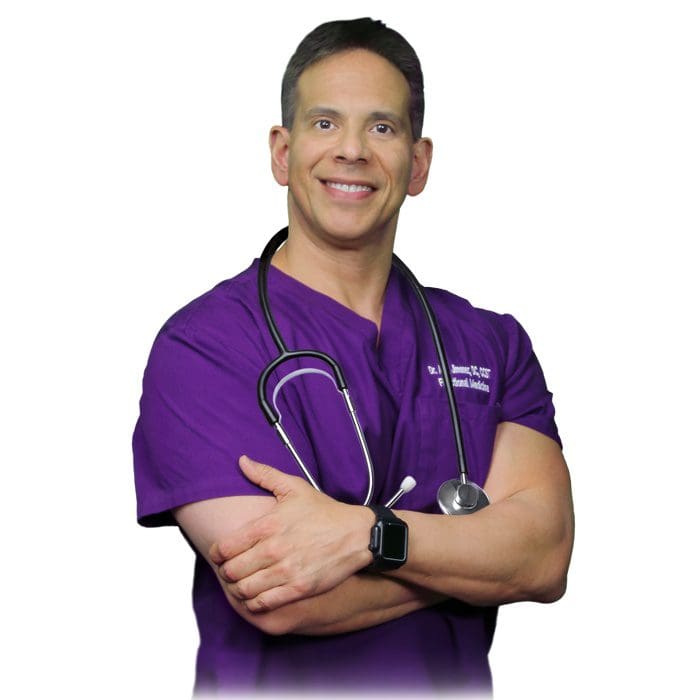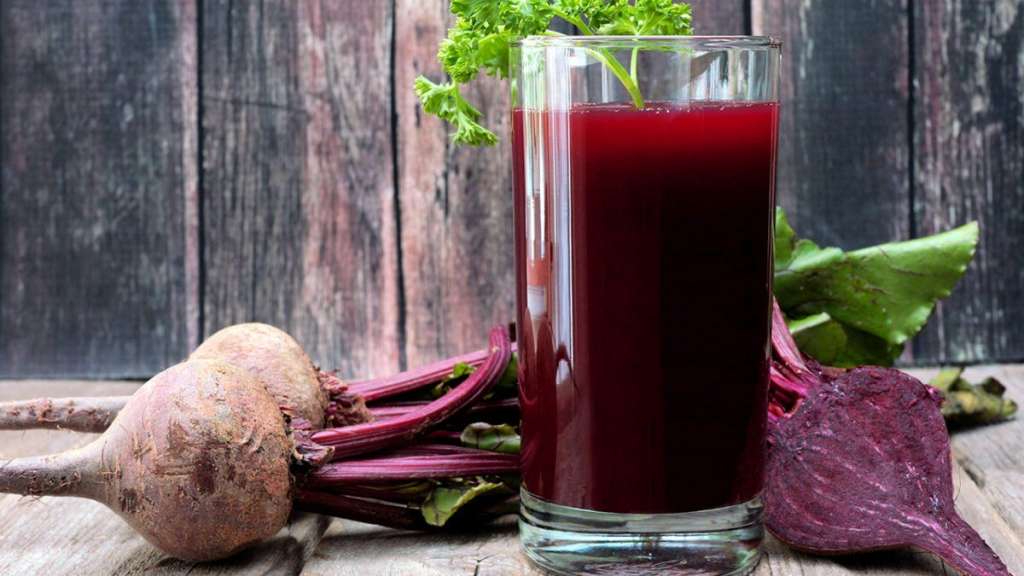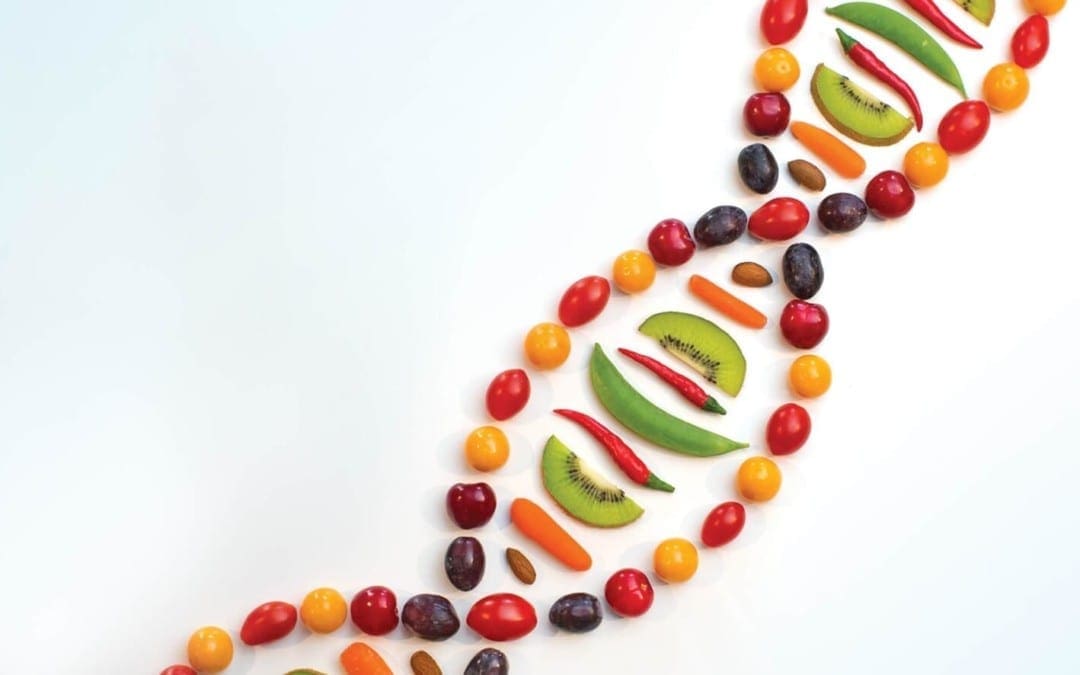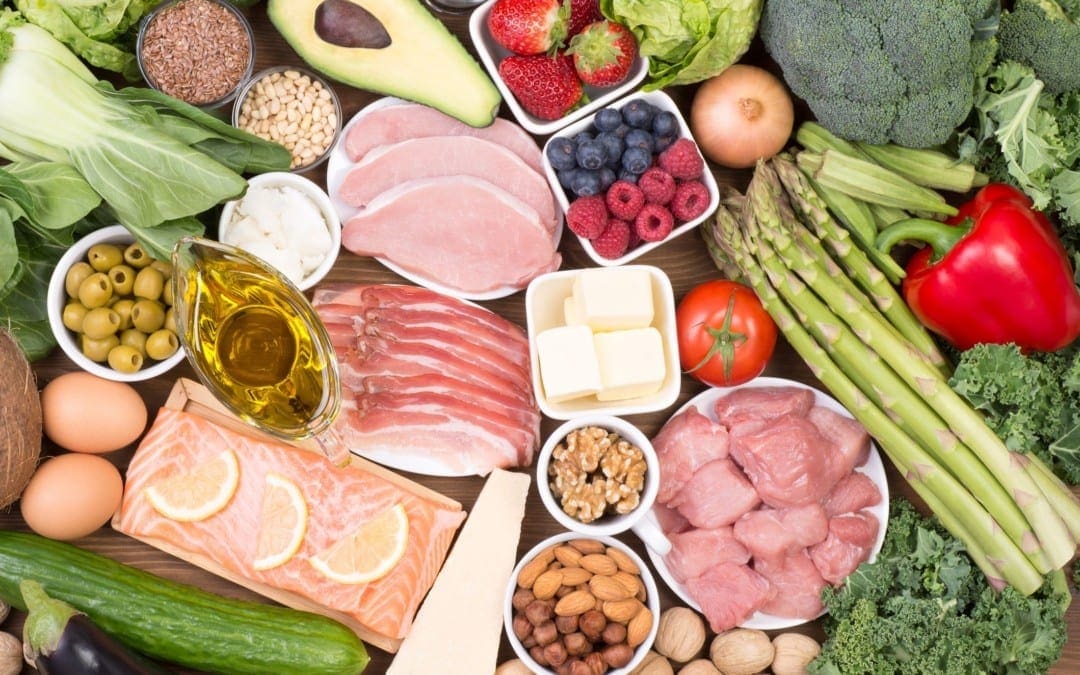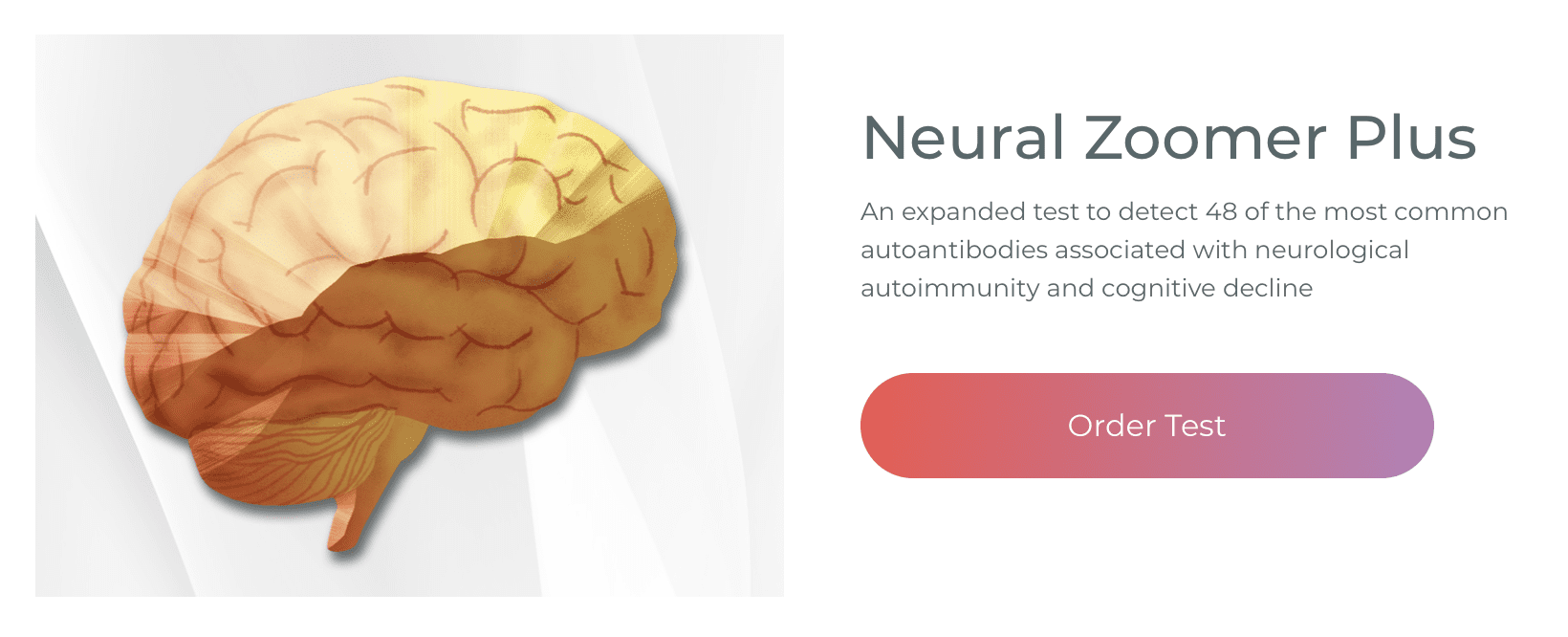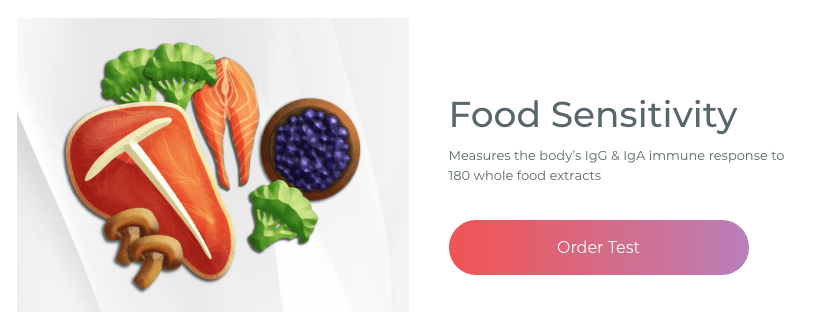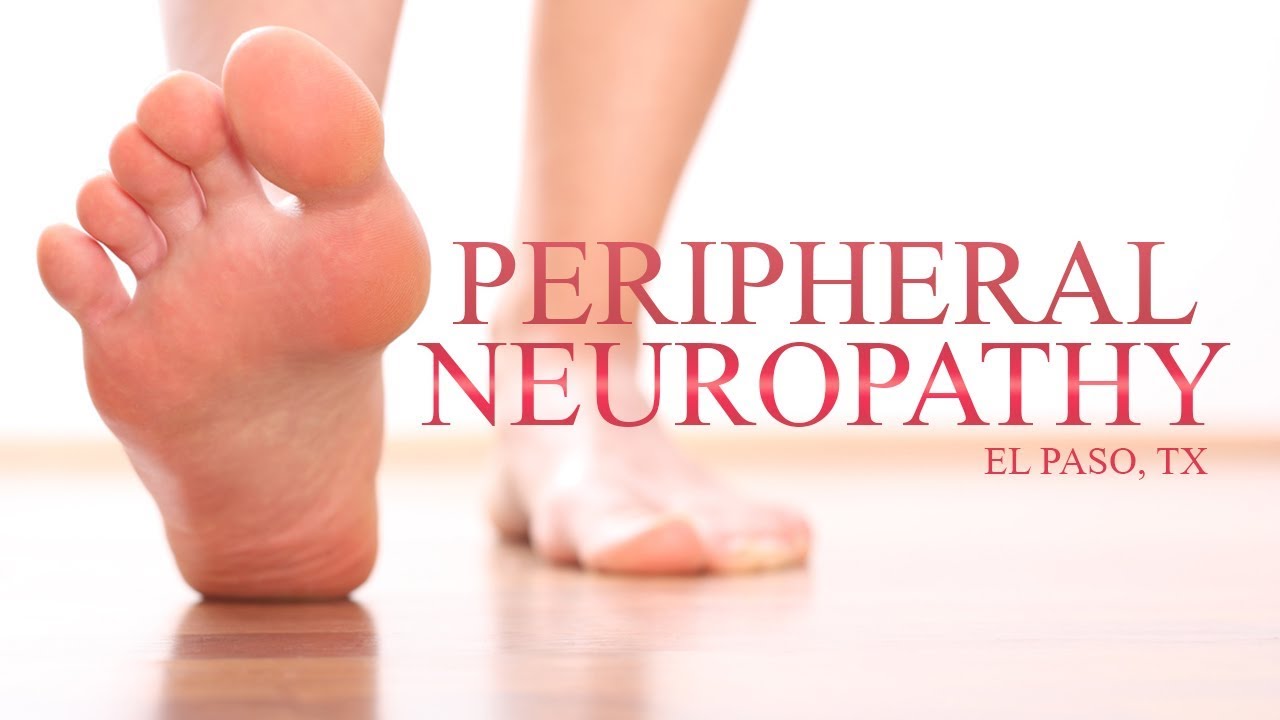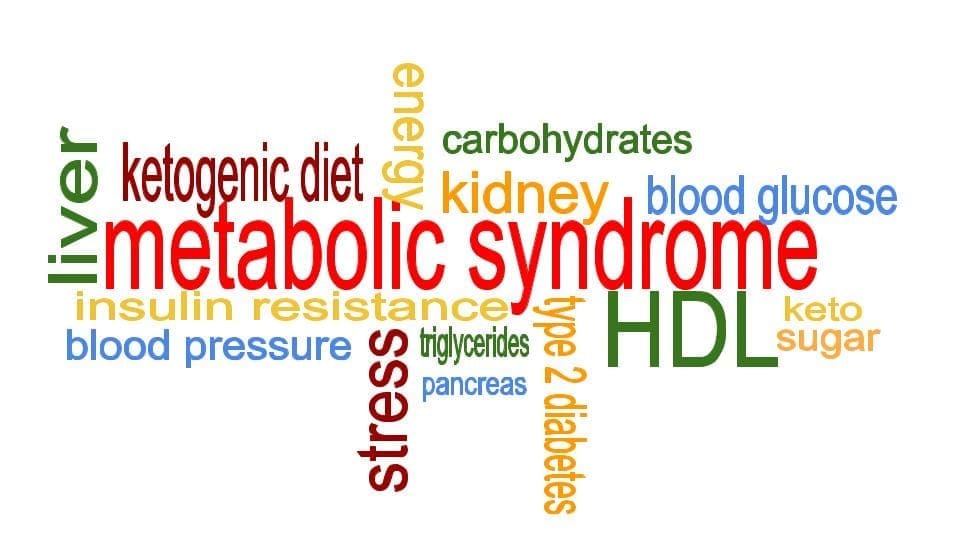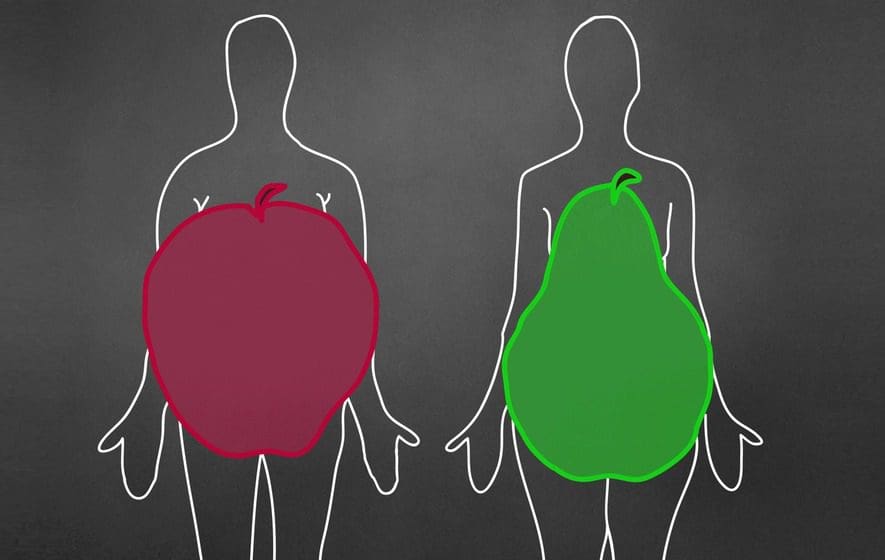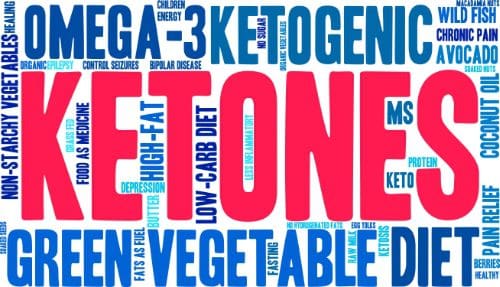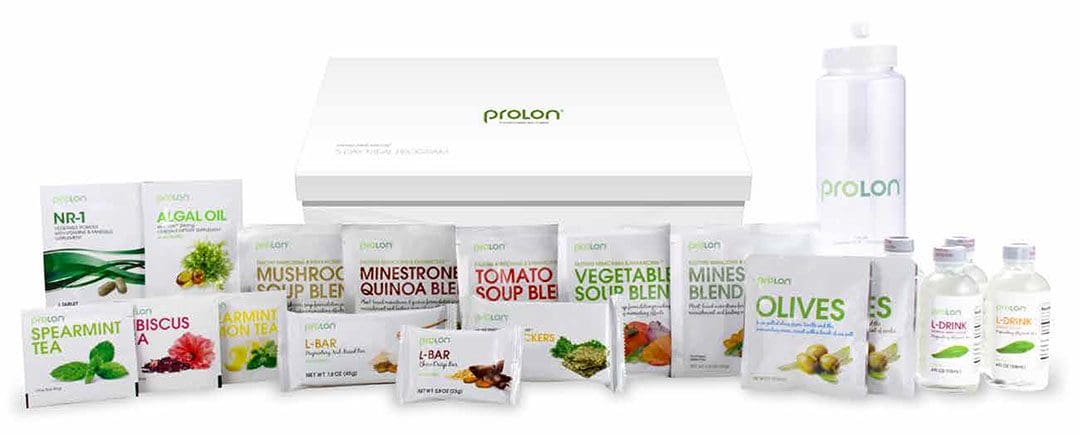Podcast: Nutrition and Fitness During These Times
PODCAST: Dr. Alex Jimenez, Kenna Vaughn, Lizette Ortiz, and Daniel “Danny” Alvarado discuss nutrition and fitness during these times. During quarantine, people have become more interested in improving their overall health and wellness by following a proper diet and participating in exercise. The panel of experts in the following podcast offers a variety of tips and tricks on how you can improve your well-being. Moreover, Lizette Ortiz and Danny Alvarado discuss how they’ve been helping their clients achieve their optimal well-being during these COVID times. From eating fruits, vegetables, lean meats, good fats, and complex carbohydrates to avoiding sugars and simple carbohydrates like white pasta and bread, following a proper diet and participating in exercise and physical activity is a great way to continue to promote your overall health and wellness. – Podcast Insight
[00:00:00] You know, Lizette we have been working with patients for a long, long time. And I want to ask you a little bit about what got you into fitness. OK. So start from kind of the beginning of, like what got you into this, let the people know what it is that, who you are and what it’s about. What was the reason? Yeah. Your story. So it really makes it real easy for us to kind of get it going. [00:00:30][20.8]
[00:00:31] OK, I’ll try to make it short. [00:00:33][2.3]
[00:00:40] OK. So basically, I’m originally from Juarez. So I’m originally Mexican. And I grew up over there and I went all the way through high school. And then I moved to El Paso to go to UTEP and get a degree in psychology. So my whole life growing up, my mom’s been struggling with weight. She’s always struggled with weight because my mom’s family tends to be overweight. They even suffer from, like, you know, heart disease and other diseases that just come with it. And so I grew up with that. Like, my mom was always on a diet. She was always exercising. She always had exercise tapes. [00:01:18][37.5]
[00:01:18] So I guess it was ingrained in me to not be in that situation, but it still didn’t stop me from gaining a lot of weight. Did you get heavy? [00:01:27][9.1]
[00:01:29] Yes, of course. Of course. Because I didn’t have the tools, you know, I didn’t know any better. So I was eating like we all normally do, you know, like when you don’t know about things, just a lot of bread and sweets. Soda. I didn’t really drink water like water, water daily until I was sixteen. Yeah. My drinks were always Coca-Cola, it was the family drink. The family beverage and then maybe like Kool-Aid and things like that. Yes. And so I didn’t start drinking water until I had to be on treatment for a UTI or something. When I was 16, and that’s when I learned my first lesson was, OK, well, you’re on treatment so you can’t eat like acidic things. So I couldn’t even eat lime, but I couldn’t eat candies either, so I couldn’t eat sugar. I loved tamarind candies. I couldn’t eat that. I couldn’t eat sugar, no chocolate, no coffee, no cream. Like, they cut a lot of things. And I had to drink only water. Like the first time that I had to drink a glass of water. I thought I was going to throw up like that bad like that’s how bad it was. [00:02:35][66.5]
[00:02:36] And so then a month of this treatment, I lost like 15 pounds and I felt amazing. And this is I’m 16. I’m like, oh, my God, this feels great. I lost all this weight. Of course, that’s all I was focusing on at that point because that’s, I was 16. Right. So it’s like, oh, my God, I lost all this weight. I look great. [00:02:54][18.2]
[00:02:55] And so I started exercising more with the focus of being more fit. And so little by little that happened. So that happened the rest of my high school. Then I came to the U.S., I started college and I gained like 30 pounds. Right. Like you do like one does, right? Yeah. And then I didn’t really care. I did care. I did care. But I didn’t care. Like, I wasn’t doing anything about it. But it did depress me. And it caused me a lot of inner turmoil and anxiety and just depression and things, among other things. [00:03:25][29.7]
[00:03:26] And so I started exercising. I always kept active. [00:03:28][2.4]
[00:03:29] Is what’s interesting because I grew up with my mom, like having the videotapes and stuff. I always was on and off exercising. And so then I started doing more research. And that’s when I started kind of teaching myself, you know, like, look up, exercises, look up. But luckily, we already had the Internet and things. So I learned a lot about that. And I started doing my own workouts and I started watching what I ate. And I started like eating every three hours because supposedly that accelerated metabolism, which now we know is not the case. But I started doing that. So that actually shrunk my portions and I learned how that helps, too. Mm-hmm. And then I was going to move to L.A. because that’s what I always wanted to do when I went to go over there and pursue a career. [00:04:09][39.9]
[00:04:09] At what age did you go to L.A.? [00:04:10][0.9]
[00:04:11] When I graduated from college, I was. Twenty four. Yeah. Twenty four. So I was twenty-four when I moved and. But before I moved I was like, well I can’t go to L.A. to want to be an actress and have 30 extra pounds. Because when I see TV, that’s not, you know, you’re sold this image, this image of I need to look like this and this and this. And of course, I never filled out any of the requirements, but I still wanted to do it. And so I really focused on this. Not in a healthy way, though, you know, like I was really not eating well enough. I was probably exercising too much and not eating the right things because while I was losing weight, I wasn’t necessarily feeling any better. And so once I moved to L.A., I continued to work out and study and learn and then I studied nutrition. When I was over there in the university, not the university, the city college. And so that’s when I learned and that was my next big lesson was when I learned about nutrition, how like certain foods and the like, too much of this, too little of that, the wrong balance of things, the importance of vegetables and fruits, which I’ve always loved. But you see the difference between filling up on vegetables and fruits instead of filling up on pasta and bread. Yeah. And the repercussions that that has on your health, not only on the way that you look like we were mentioning earlier, right, not only in the way that you look but also the way that you feel and just learning that changed my life completely. I remember one day when we learned about additives in foods and dyes. We talked about Red 40 and like how, you know, like all these additives can have repercussions. You know, they build up in your system. Kids usually get hyperactive more because of the mix of dyes and additives than they do because of the sugar. Because if you eat like a lot of honey, you don’t get hyper necessarily. But if you eat a bunch of like Skittles, maybe because it has a bunch of other things in it. And so we learned about that. And like oh red 40 and then I get home and my husband had like this three-pound thing of red vines and I’m like, oh, red vines? [00:06:17][126.0]
[00:06:17] What are those? Those like Twizzlers? [00:06:19][2.3]
[00:06:20] Oh, no, no. Three pounds, literally three pounds. Yeah. Yeah. [00:06:25][5.2]
[00:06:26] Oh, we can’t eat that. Like, I just learned all this. And so every time I learned something about something, it’s like a new epiphany and a new item that I didn’t keep on my shelf anymore. And you know, I was like this fluffy white bread that’s delicious on sandwiches has zero nutrition for me. I need to get something that’s more whole grains, you know, like if I’m going to do a PB & J, I need to find my peanut butter. [00:06:50][24.5]
[00:06:50] That’s just peanuts and my bread. That is like sprouted grains and whole grains. And if I’m really going to stick to the bread, I at least need to do it right. And so that really, like, just that knowledge changed everything for me. And then I decided to… [00:07:05][14.4]
[00:07:08] Get certified as a personal trainer, because I kept being told by people at the gym that I should. As they would come, I was like on my training and I was like, oh, we should exercise together or whatever. And they would see how I would exercise and push myself. And they’re like, have you ever thought of being a trainer? And I was asked that so many times. I was like, no, no, I just. [00:07:27][19.8]
[00:07:28] You’re crazy like no. [00:07:30][1.5]
[00:07:31] Of course not. Like, I just had that, I was told that by several trainers over the course of maybe five years. And I was like, you know what, maybe I should, because then people would ask me, hey, how do you do this? How come you’re fit? How come you’re this, well, OK, all right, I’ll do it. [00:07:47][16.1]
[00:07:48] But I also wanted to live in Japan. That was another dream that I was waiting to fulfill while I was in L.A. I went in the meantime while because, as I said, I’m from Mexico, but to go teach English in Japan, I needed to be an American citizen and my mom’s American. But I was a resident. I had to wait until I had my citizenship to apply to go to Japan. So in the meantime, I went to L.A. and I did acting and modeling there. And then I was like, OK, but let me go to Japan first. But what if I don’t get in? So I got my certification before I left. I did get in. I went to Japan for two years. [00:08:17][29.7]
[00:08:18] I taught PE classes in Japanese high school and it was super fun. I was an English teacher. But, you know, they have you get involved with the students. And it was just really, really fun because I taught them, I did three different ones and one was just all cardio, like high-intensity interval training then the other one was just yoga. And then the other one was strength training. And so, like, I kicked their little butts, but, you know, like it was awesome. [00:08:42][23.5]
[00:08:42] And then the teachers were, how old were they? How old were the kids? [00:08:44][1.8]
[00:08:44] They were high school. [00:08:45][0.4]
[00:08:45] The last three years of high school, because they do years like in Mexico, where it’s like three middle school, three high school. So they were between 15 and 18. [00:08:52][7.0]
[00:08:53] Wow. Yeah. Yeah. No, that sounds familiar. How did you begin. How did you begin your fitness stuff. [00:08:57][4.4]
[00:08:58] Oh, my mom’s always been super active. We come from a super active family just because my mom has like crazy amounts of energy, she’s always like, yeah, she’s like, let’s go hiking, let’s do something. [00:09:11][12.3]
[00:09:11] Let’s do this. Like, we never just watched TV or did anything. [00:09:14][2.6]
[00:09:14] So I just grew up exercising. And in sports, it was just always a thing. So yeah, I just continued it and then in high school joined high school sports. And then once I got to college, I wasn’t in any sports. And I just felt weird. Like once you have been active for so long, you can’t just sit around. So I kept working out, kept doing that. And then, you know, I really loved watching your body change. It’s fascinating. It’s so. Yeah, it’s so. I just watch my own body change and not even that, like you said, how you feel. You’re like, oh, I have so much energy, I’m sleeping great, I’m doing better in school. Like, everything just starts to come together. So I just changed my major. I originally wanted to do physical therapy because I wanted to help people. But then I realized that I wanted to help them in more ways than just that. And so I switched it to exercise science where it’s more focused around nutritional aspects and things like that, where I could kind of do almost I felt a little bit more with it for where I wanted to go in life. So then I switched into that and then we ended up moving to El Paso. And now we’re here and I’m oh, we love it. And we’re still working out when I have a son. So he’s always busy, always playing, and we’re always looking up like what’s the youngest soccer league that they have, like something to get them interested. I also think if you give people tools early on, it also helps so much then they don’t have to have that same struggle that you had, because even though my mom was always active, she was still always like on a diet. She was wanting to look how TV looks. And it’s not always realistic for us, you know. [00:10:56][101.2]
[00:10:57] Right. So and she never really went about it the healthy way because she was uneducated. So she was just kind of, sorry… [00:11:04][7.4]
[00:11:05] Mom, she just didn’t know about it. [00:11:11][5.7]
[00:11:12] She doesn’t know about fitness and how carbs and everything actually work in your body. She just sees Pinterest and she’s like, oh, same as how you were talking about earlier. Well, this keto works for them, so I’m gonna do it. But if you don’t know what’s actually happening in your body, you don’t know the results because you’re not doing it correctly, you’re not following everything, there’s so much misinformation. So I love that you love to spread information and teach our clients like real-life skills that they’re going to use and implement. [00:11:44][32.6]
[00:11:44] Lizette what kind of other clients do you have? What kind of clients do you like to train? What’s your thing that you enjoy the most? [00:11:49][4.5]
[00:11:49] My thing. Look, you know what? I enjoy all kinds. And I really have had all kinds of clients. [00:11:55][6.0]
[00:11:56] I’ve had everything from people who used to be athletes in school who now aren’t like they’ve only been out from being athletes for like six months. So they’re still super fit and they want to keep training, you know, so I can really push them really hard for that. [00:12:08][12.9]
[00:12:10] So that’s really fun because I get to play with them and really push them and have them do crazy things that I’d come up with. It’s like, OK, now let’s jump over that box. And then you’re gonna pick up this weight and then you’re going to do a clean & press and then you gonna turn around. Are you’re going to do it again? OK. Because they can. Right. [00:12:26][16.5]
[00:12:27] But then also something that I love is the people that are looking for transformation. They’re like, you know what? Like, I just feel sluggish. I feel tired. I just don’t feel good. I’m starting to feel the pounds adding up and I just have aches and pains. It’s like, OK, let’s start. I love seeing them progress. I love seeing a person who can do 10 squats and be dying. And then by the end of the month, they’re hitting out the 20 and by the 20, they’re dying. But they look so much stronger. They feel great. They already told me, I feel stronger, I can sleep better, you know. And that’s just so I feel like my favorite is probably the transformation. [00:13:11][44.1]
[00:13:13] Like seeing their aha moments almost when they realize that they’re like, I’m here is when I’m doing this is what I’ve wanted. And yeah, like you said, that progress. That you first start seeing that it gives them, you even motivation to help them even more. And it’s great. It just…� [00:13:29][15.9]
[00:13:29] Keeps going. Exactly like when people are like struggling to do a push up on their knees. And then the first time you see them do five off their knees and they’re so proud of themselves. Yes. [00:13:39][9.6]
[00:13:39] You’re so proud of them. It’s like, yes. Over like, oh, I didn’t have any cravings this week because they finally were able to put themselves through, you know, like cleaning out their eating. [00:13:52][13.1]
[00:13:52] And now they’re used to eating healthy and eating like the healthy versions of sweet things or whatever it is, you know, and just having them have their aha moment, having them feel and live the transformation and understand it and be like, I love this, I can do this and I want to do this forever. That’s my favorite. [00:14:10][18.1]
[00:14:11] That makes a big difference, you know. El Paso has been in the last couple of years. I’ve been here since 1991, so I’ve seen the transition. When I first came here, El Paso was really dilapidated. It was a different town. And I got to say that when I first, I came from South Florida, my background was a fitness person and we were all into exercise physiology in Florida and California when we came out. When I came out here in 91, it was, there was no one into fitness. It was hard. They didn’t understand what it was to diet. There were a lot of metabolic syndromes, a lot of issues with weight, you know, waist-hip ratios. It just wasn’t important at one point. As I mentioned before in a prior podcast says that El Paso was considered the fattest sweatiest town in the United States. At one point. So this is within about. Around 2000, I started seeing a migration of a lot of fitness people and a lot of people that really took to it. And it’s really cool to see you guys because you guys have a love for fitness. [00:15:07][56.4]
[00:15:09] That’s endemic everywhere in El Paso, where right now we’re inside of the Push Fitness Center. It’s a Crossfit type of fitness center. Daniel Alvarado owns it. And he’s the one that actually might be here in a few moments. But what I wanted to say was that the world has changed in terms of fitness and it’s got a lot of individuals like yourselves out there teaching people, showing people. Where do you teach people at? Where is your fitness center at? [00:15:33][24.4]
[00:15:34] Well, right now, at the moment, I am not at a fitness center, but when I do have a fitness center, where I have been is Matt’s personal training and wellness center, which is on Airport Road. And so I am one of the trainers that use those facilities. [00:15:51][16.5]
[00:15:52] Before that, I was working at Gold’s Gym. But right now the goal is to have my own small, just small gym for only personal training. Personal coaching. Yeah, yeah. I originally wanted to have like actually kind of like this, like the push fitness, you know, not necessarily Crossfit but like a small gym where anybody can come and do their workouts. And also I’d like hit, I like teaching like short 30 minute hit classes. [00:16:16][23.9]
[00:16:16] When you say hit, what do you do particularly in your hit classes? [00:16:18][2.1]
[00:16:19] My gosh, so many things. [00:16:22][3.2]
[00:16:24] So for hit, I enjoy anything that is a lot, enjoy is a very particular word because it’s like you kind of hate it at that moment, but then you feel so good afterward. [00:16:34][9.8]
[00:16:35] And it’s a lot of jumping. So a lot of plyo. Plyometrics. So a lot of jumping. A lot of like box jobs. Burpees, love the burpees. The best thing is the combos of burpees and something else. So for example, like a burpee to a clean & press, burpee, clean & press and then just do that like 10 times and then you do something else. A lot of slam ball. You know, I love doing those in a lot of compound movements. And I also like doing the HIRT, which is high-intensity resistance training. So it’s kind of like hit. But instead of so much jumping. Right, you’re doing more of the strength. So really pushing, pushing, pushing short sets. Repeat, repeat, repeat. Between four and six minutes. And then I give a break, maybe 45 seconds to a minute and then we keep going. [00:17:18][43.0]
[00:17:19] That’s awesome. You know, with the transition, with the people who are stuck at home. How have you adapted to that situation in terms of the COVID protocol? [00:17:27][8.4]
[00:17:27] No. Well, basically virtual. Just seeing everybody virtual. I live in a small apartment, but I have a space where I can move. So I just tell my clients, make sure you find a spot in your house, your backyard, wherever you can. Where you have enough room to do A, B, and C before we have our meeting. And then we meet up and on Zoom. Zoom. Uh-huh.[00:17:49][21.6]
[00:17:49] And basically I usually end up working out with my clients. I’m going to be honest with you. I can’t stand there watching you do push-ups. [00:17:58][8.1]
[00:17:58] You know what? That’s true. It’s true. It is a fitness individual. I don’t know the idea that the best workouts are when you do it with somebody. Right. So, you know, in terms of even as a young kid, I was involved in training individuals and it was not fun watching. You know, it’s like I’m wasting my life here watching you. Right. So you get in there with them, you know, and while you’re in there, you give them the right amount of time to rest. And it’s almost like back and forth. So it’s kind of in tune the same way. So I like that. What other things do you do in terms of the times? The time? [00:18:32][34.0]
[00:18:33] Well, besides that, because a lot of people don’t have equipment at home. So I am implementing a lot of my hit workouts with the people that can do it. But for example, my older clients, they can’t really be, you know, like jumping around and doing things like that. But we work more on balance and flexibility and just basic strength. So no equipment workouts, which honestly, you don’t necessarily need equipment to get a good workout. You can always kick your butt with nothing like you, just your own body weight. So I do a lot of body weight. If people happen to have a lot of us have equipment, you know, at home, like some of us have a couple of dumbbells or a band or something. So I just adapt to whatever they have at home, be that nothing or a full gym at home. You know, some people are lucky and they just have a full gym so I can go all out. [00:19:22][49.1]
[00:19:22] What do you think of this new movement with the rubber bands and people using, you know, elastic bands to be able to supplement? [00:19:27][4.7]
[00:19:27] I like it. I like it a lot because of several things. One, it’s cheaper, so it makes strength training more reachable for anybody. More approachable. [00:19:39][11.5]
[00:19:41] And you can take it anywhere so you can travel with them. You can keep your routine even if you travel. And another thing that I like as a trainer and fitness person, you know, you need variety both in what you eat and what you do activity-wise. So I think they also add a nice variety to what you can do with them. The only thing is you need to know, like with so many other things, you need to educate yourself or have someone educate you about how to properly use them because it’s so easy for a band, for example, to put it in the wrong place by your knees and put the pressure in the wrong place, and I’m sure as you know, you could mess up joints and things by not putting the right equipment in the right place. So if you’re using a band wrong, you could potentially maybe cause some damage if you don’t. Don’t know how to use it properly. [00:20:29][48.3]
[00:20:29] Yeah, we were, I was watching, my son, who he actually trains people and they got caught in Chicago and they were kind of held in the university and no gym. The gyms were closed and out there in Chicago as well. And they developed these kinds of rubber band techniques. [00:20:45][15.2]
[00:20:46] That are amazing. And he calls his group, the functional fitness fellows. But what they learn is with all those exercises that you guys do with the rubber bands, you know, it really helps out the joints because the rubber bands kind of glide in the direction of the body movement. And that’s not obvious until you go through it. You feel like, man, this feels good. This rubber band. And then you also get the negative joy out of it, too, because you’re holding it from snapping back. Right. So it’s really a really cool thing. So I think that’s cool. What are the, do you work on diets as well? [00:21:19][32.6]
[00:21:19] Yes. Yes, I actually do a lot of nutrition. So anybody that I train for fitness, I also coach them in their nutrition. Again, we were talking about how they go hand-in-hand. You can’t have one without the other. And so for diets, I usually, it depends on what people’s goals are. Most people, especially in El Paso, like we’re talking about, most people are looking to lose weight, get fit. Right. So first of all, to lose weight, we need to balance things out. I always, always suggest to everybody, just for health in general, is to balance your plate in a way that half of it, half to 75 percent of it, should be vegetables. [00:21:59][39.3]
[00:22:00] That’s what I just, makes me happy, you know. Yeah. And I think that’s the best. Why? Because they have fiber. They have vitamins, minerals. They have all the good stuff that we need. [00:22:08][8.6]
[00:22:09] Well, if you look at a food plate now, if you just Google like what a food plate should be. So much of it is grains and bread. And it’s not. It’s like the person who made it isn’t. They need more vegetables, you know. So that, yeah, we need more. [00:22:24][15.1]
[00:22:24] I struggle with that with clients precisely because they see that plate. And it’s like but here it says that I need to have bread every day. A quarter of my plate should be bread. Well, no though. Yeah. Especially not if you want to lose weight and especially not that bread. It’s like, you know. [00:22:42][17.7]
[00:22:42] And so basically I always recommend. You want weight loss. You want to feel better. Let’s cut out all the super processed grains first. First of all, no pasta, no bread, no cookies, no processed sugar, no added sugars. That’s my first step. [00:22:55][12.5]
[00:22:55] And what do you, what do they say when that happens? What are they going to get? [00:22:58][2.7]
[00:22:58] They get very sad. But it’s also like unknowing sadness. [00:23:06][8.0]
[00:23:07] Like I knew you were going to say that, you know, it’s kind of like they don’t say it, but you can see it in their eyes. And it’s like, I’m sorry. Like, I know everyone wants to hear magical. What do you call like a recipe, a magical recipe that just like snaps and I can eat and do whatever and just Netflix all day and eat chips and be skinny but and fit? But you can’t like. You can’t. Yeah. So, yeah, 50 to 75 percent veggies. The other quarter or half should be balanced between proteins and healthy fats and maybe a few carbs but whole grains. And I always suggest that whole grains and that type of starches and things are kept to a minimum. [00:23:49][42.0]
[00:23:49] I always recommend especially for weight loss, either just keep them out completely or two to three times a week. I would say no more than three times a week is what I recommend. And I usually recommend my clients to eat their grains, whole preferably, you know, brown rice or quinoa or buckwheat. Oh, my God, I’m loving buckwheat. I just started buying it and eating it. And I love it. [00:24:11][22.1]
[00:24:12] I mean, but it’s very little like you literally need half a cup. You know you don’t need a million pounds of this. You don’t need to fill up a bowl with rice or something and then put like three vegetables on it. [00:24:24][12.5]
[00:24:24] It’s the opposite. [00:24:25][0.3]
[00:24:25] So do you do the Zoom diets, too, as well. Do you help them out with their diet? [00:24:28][3.0]
[00:24:28] Yeah. Yeah, we do. So I do. For nutrition coaching we usually talk and kind of like this. [00:24:32][3.8]
[00:24:33] It’s basically a conversation, you know the first time I get to know my client, we talk about it. What are your needs? What do you do? What is your schedule? Do you like to cook? Do you have time to cook? [00:24:44][11.7]
[00:24:45] Because all of these are important things, you know, and. Yeah, and yeah cooking makes life easier. But at the same time, not everyone has the time or ability. [00:24:52][7.6]
[00:24:53] And you want to make a plan for them that they’ll stick to. [00:24:55][2.2]
[00:24:55] Yeah, exactly. And you want them to stick to it. So I always try to work with them in regards to. Okay. What do you have available this and this and this. I make a note. We talk about it. I give them the information we verbally. But then once we’re done, now that we’re doing it this way, once we’re done, I send an email that has all the knowledge that I have. So everything that we talk about portions, the plate, portion sizes. So, like, measure your proteins like this. Like, for example, your fist is good to measure your vegetables. And for example, for women, we want to eat at least four to six portions a day. [00:25:29][33.9]
[00:25:30] So it’s like that’s an easy way to eyeball it. [00:25:33][3.2]
[00:25:36] I’m not the best. Always, at getting four to six, but it’s a good number to have again. [00:25:41][5.5]
[00:25:43] Four to six is good. You know what? For many of the diets, you kind of try to figure out which diets can work for people. Sometimes we end up with like Mediterranean, low fat, low carbohydrate diets. These diets, they change. I’m finding that a lot of the, just for El Paso in general, from the Mediterranean to low fats to even the ketogenic diet and though there’s been a lot of talk about the ketogenic diet. Do you do that? Do you offer those or what kind of diets do you like working with an individual, with an individual? [00:26:12][29.8]
[00:26:13] It really again, it depends on the person, because you also have to take into account like vegan people, people who are vegan, who are vegetarian or who have certain allergies to certain things. And so you need to really take a lot of that into account. And so I don’t necessarily prefer those like very restrictive diets, like keto and things only because people have a really hard time sticking to them. [00:26:41][28.2]
[00:26:42] I don’t know anyone who can for a long time, no. It’s hard. [00:26:44][2.4]
[00:26:45] And then they always want to, like, kind of cheat. And it’s like, oh. But I had this, too. And it’s like, no, no, no. Like, if you’re doing keto, it’s so specific. [00:26:52][7.1]
[00:26:52] Like Kenna was talking about, if you don’t know what this process is doing in your body, like there’s a specific reason why you’re only supposed to eat A, B, and C, but not D, E, F, you know. And if you add a little bit of these other ones, you’re throwing the whole thing off balance and instead of losing weight and still feeling better, you’re going to actually ruin it. So I prefer to work on something that is sustainable, which would be just OK. Kind of like portioned yourself. Try aim for the plates. But I do like paleo. Yeah, I love paleo or like primal ish. Yes. I always say that my diet is kind of primal ish. How so? Because I stick mostly meats, vegetables, fruits, seeds, nuts, vegetables, fruits, meats. I don’t do a lot of byproducts like I’ll eat eggs for example that. But that’s something that you could have gotten, you know, primally. I do. And then the ish comes from the grain sometimes, you know. Mm-hmm. So my ish comes from grains, sometimes cooked potatoes which, obviously that wasn’t a thing that they were doing. And my added sugars, I guess, which I don’t do a lot of. And I use monk fruit and I use stevia. But for the most part, I try to eat as whole as possible. And I consider that primal ish. Because it’s mostly things that are the least processed possible, and that’s what I prefer to give people. [00:28:24][92.0]
[00:28:25] Do you give your clients like help in the grocery store? Like, I know I learned when I first went to college and I had to buy my own groceries, that if you stick to usually the outside of the grocery stores, you’re gonna be way healthier because once you start going in those aisles, that’s where you start. All of the bad stuff, all the additives, it all starts coming in. And a lot of people I didn’t even think about it until I was in that position. I was like, wow, that’s true. Yeah. So what kind of tips do you give your clients when it comes to grocery shopping and success and things like that? [00:28:57][32.6]
[00:28:58] Basically that. Exactly, yeah. When I first heard the saying I was already doing it, but I hadn’t thought about it. [00:29:04][5.8]
[00:29:05] And so when I heard shop the perimeter of the store is when I thought, oh, no wonder I never know where anything is inside, like in the middle. I always if I ever need a can of something. Yeah. I’m like I don’t know where they have that or like if I’m going to bake. And I actually need regular flour for something like I don’t know where that is because I always just like shop the perimeter of the store. So yes, that’s I would definitely do that when shopping. [00:29:31][26.1]
[00:29:32] Just stick to buying things that have the least amount of processing. [00:29:36][4.4]
[00:29:37] So if you go around the perimeter, you get all your vegetables, you get your meats, you get your animal products right. You have your eggs, your milk, your cheese, you have all those things. So I think that’s a really good idea. You also have your freezers, which while they do have all the bad frozen stuff, they also are frozen fruits and veggies, which, as we know sometimes can be better than buying fresh, because if the zucchini is sitting in your fridge for two weeks, it’s lost a lot of nutrition. [00:30:04][26.5]
[00:30:04] But if you buy some frozen stuff, you can actually, you know, it keeps its nutrients a little better so you can make smoothies, especially for people who don’t have a lot of time. [00:30:15][10.5]
[00:30:15] I recommend frozen fruits, for example, and just kind of like throw them in there for the smoothies, some yogurt and let’s go, you know, quick breakfast. [00:30:22][6.9]
[00:30:23] We’re big fans, big smoothie fans here. Yes, big fans. Because, as you said, they’re just so fast. Yes. And you just throw everything you need in there. You’ve got your fruit. You can do vegetables in there, too. [00:30:33][10.3]
[00:30:34] Lizette, we have Daniel here. Daniel, come on in. Have a seat, please. [00:30:40][6.8]
[00:31:30] Daniel. Just to turn to you for a little bit here. I’ve noticed that in the last couple of days this place gets really packed in terms of people looking for new fitness during these periods of time. How has it been during this COVID period of time for you in terms of the diets, in terms of fitness? [00:31:43][14.0]
[00:31:46] It’s been a lot of adaptabilities trying to make sure to make everybody feel as comfortable and safe as possible, so we have constant like screening in every single class as far as wiping things down and mopping the area. I mean, the cleaners, the gym has never been cleaner than ever before, which is. [00:32:03][16.3]
[00:32:03] And I can attest to that. I love this place. I really wanna eat in this place, man. I want to eat off the floor. [00:32:07][3.9]
[00:32:10] But with that and then with still the online training promos that we’re doing, that I’m sending online it still gives people the option of either coming into the gym or doing it at home. We were able to rent, lend some equipment so they can feel comfortable and so do it at home until they feel safe and coming back to the gym. But through all of that, what I’ve told people is that they have to make sure that the workouts have to be a little bit longer than here because they’re living more sedentary lifestyles so they can’t eat the same as they were before. Even if you were used to driving from point A to point B, up and down, and round, you’re still doing more activity than you were before, because now you’re just behind the computer, sitting down and you sit down and then you go to the sofa. And then when you’re on the sofa, you water the grass. Isn’t going to the refrigerator… [00:33:04][54.5]
[00:33:05] Exercise? Unless you put your refrigerator a mile away from your house. That’s a good idea. Come to your house. Everyone can eat it at your refrigerator. [00:33:15][10.7]
[00:33:16] Only. Ten burpees on your way to the fridge every time. [00:33:19][3.3]
[00:33:20] Yeah, that’s a good idea. Ten burpees on the way to the fridge. You know what? That makes it worthwhile. Just punishment for opening the door. Exactly. [00:33:28][8.1]
[00:33:29] So I’ve noticed that everyone’s doing a lot of people, as I was just speaking regarding that she does the I guess the telehealth over the phone, over the systems, and in the Internet. And Zoom, you found that to be very comfortable. I know you began that process when this COVID got really hard and heavy. [00:33:45][15.9]
[00:33:46] You were all over it, like just talking to people one on one on the Internet. How did that work out? [00:33:51][4.9]
[00:33:52] Danny oh, me? Yeah. Yeah. [00:33:56][3.6]
[00:33:57] You know, it was a little bit. It was a harder transition for me first. Took me about a week after we shut down. To actually get it going. Just because. First of all, I’m not the craziest about even face time, I don’t like looking at myself when I’m talking to someone it’s weird. So I would have to shut off the camera. But then it defeats the purpose. You know, some people want to see you. So we develop videos and it shows you how to whether it’s me or another instructor and how to do the workouts and things like that. And then all our app is messaging. So you can instantly message on the app. And now we send out motivational quotes, daily tips, you know, things like that to help them keep them going. This is a transition because I got used to, you know, interacting with people on a day to day basis. So seeing me on a computer, which I hadn’t done in a very long time since I was back in school. Yeah. Was different for me, but it was good. I mean, you have to adapt to survive, you know. [00:34:54][57.0]
[00:34:56] You know, I’ve seen the whole world go through a massive transition in terms of the fitness. She was talking about the diets and how do you help people with diets and tune in to diets during this period of time? [00:35:07][10.9]
[00:35:09] Initially, first I ask what their lifestyle was like. Obviously, if they love working in a warehouse trying to keep them on a low carb diet like that is probably not the most ideal. They’re sweating, losing electrolytes, things like that. So they’re gonna be grumpy and dehydrated at the end of the day, so once they get their lifestyle, then from there I can adapt to their cording needs. You know, if they only work out three times a week, will we adjust more carbs on those workout days, less carbs on the non-workout days? So everything’s just right. Yeah, balance and manageability according to what the individual’s lifestyle is like. [00:35:50][41.4]
[00:35:52] You know, it’s really a big thing. And let me ask you this, how are people adapting to coming out and especially during these times? How are they feeling when they come in? And with all the regulations and all the fear that is behind people? [00:36:05][13.1]
[00:36:06] Well, we ensure that if before they walk into a door, if our main focus is that they can smell bleach, OK, if they can smell bleach, then our gym facilities are clean. So we try to keep that and I know this sounds kind of dumb, but I do ask people, hey, how does it smell? I’m sure you can smell the cleaning from the parking lot. Cool. We’re good. So that’s what makes people feel initially comfortable. Obviously they’re not inhaling it. So don’t misconstrue my words. [00:36:37][30.9]
[00:36:38] Well, well, well. We do have a biochemist on the line here. OK. So the biochemist would be my son and he calls me up and he goes… [00:36:46][7.2]
[00:36:46] Hey, Dad, listen, I know that you like the smell of bleach and I go yeah, that means it’s clean. But I want you to know something, chlorine is odorless. [00:36:54][8.3]
[00:36:56] It’s a good point. So he says it’s when it binds to certain urea molecules. Right. Where the smell of the chlorine comes out. So actually, the smell at a pool and the smell in an area is the actual effect of it’s combining with human dynamics. Isn’t that interesting? [00:37:14][18.1]
[00:37:15] So I don’t know if I wanted to know. [00:37:16][1.4]
[00:37:17] Oh, yes. I don’t think you wanted to know. But hey, you know what? [00:37:19][2.2]
[00:37:19] I got to tell you, it lets you know that when it’s being used and you smell that combination, it’s doing its job, working and working. [00:37:27][7.3]
[00:37:27] It’s working because chlorine. [00:37:30][3.0]
[00:37:31] Oh yes. Well yeah. Well you know I don’t know. This a different kind of show. I mean. He just took it to far. Yeah. Thank you. You took it too well but thank you for coming by Danny. No, no, no. [00:37:44][13.1]
[00:37:44] So, we’re looking at it and it really, really is a big difference because we’ve seen a lot of people. And what I was surprised with Danny is knowing how many people are, Lizette, there’s a lot of people out there, you know, that need the fitness. Right. Are you finding a lot of people coming to and knocking on your door to asking for your kind of like, help me now? [00:38:01][16.1]
[00:38:01] Because this is a real big problem. A lot of people don’t know what to do and they need help. Do you see that there’s a lot of people outreaching towards you right now because of the situation? [00:38:10][9.2]
[00:38:10] Yes, yes. Yes. Now, especially now that it’s been months and people are seeing the effects of their change of lifestyle, you know, the less walking, the less activity and the improper eating. Yeah, I have actually over the last week even I was approached by like three people within two days. Yes. That’s like not normal. [00:38:34][23.9]
[00:38:35] Right. Right. Because I’m not even promoting right now and we promote via social media. [00:38:40][5.3]
[00:38:42] You know, it’s like. Oh. Oh, jeez. OK. Yeah. Yeah. [00:38:45][2.6]
[00:38:45] You know what? I get ready to see sometimes though the context through the push and I see people 3:00 in the morning, hey I need help at 2:00 in the morning. People all over the time just we need help. We need to have individuals out there that can help us and guide us. So it’s really cool to see what’s going on. Let me ask you this in terms of these times, nutritional tips. Tell me a little bit about like what kind of nutritional tips you tell people. Danny just mentioned some things about, you know, certain things to eat. How do you do it? [00:39:13][27.9]
[00:39:14] Well, along the lines of what Danny was saying is exactly like a great point is making sure that what you’re taking in matches what you’re doing during the day. So if you’re doing your workout that day and you have like really intense workout or really intense job, you can eat maybe your carbs that day, you know, like add some rice or some buckwheat or quinoa to your lunch. On the other days, if you’re not doing anything, you only maybe walked for 30 minutes or an hour and then went home and just chilled all day. Then good salad, some grilled veggies, some steamed veggies, some grilled proteins or alternatives would be good. So my biggest tip is cut out all the additives that you don’t need, like sugars and super processed foods. But make sure that if you are exercising the days that you are active, you are ingesting the right amount of food and the right types of foods too, you know, like just basically that just match your foods, your intake to what you’re doing and mostly stick to the veggies, stick to the lean proteins. And then when you’re active, you can have a little bit of the starches. [00:40:26][71.4]
[00:40:27] I’d like to ask both you these questions because I know what we can talk forever and we have some gifted communicators here. But let me ask you this, Danny, in terms of like a visual how to set up a kitchen, you know, in terms of for success. I was, you know, kind of questioning. How do you approach a person and say, this is how I want you to set up your kitchen so that you can be successful? This is the domain. Everything starts in the kitchen. It starts there and from there propagates. So how do you help them out in terms of preparing the philosophy or the way of thinking for their kitchen? [00:41:01][34.2]
[00:41:03] In, man, that can be designed in 100 or one different, it depends on the person. [00:41:08][5.3]
[00:41:09] But. What I tell people is if they’re going to lose weight. [00:41:13][4.0]
[00:41:14] And it’s not healthy. Don’t buy it. That’s probably the easiest thing. Chips. Obviously, don’t buy them. Candy. Don’t buy it. [00:41:24][10.2]
[00:41:27] That’s true. Yes. [00:41:28][0.6]
[00:41:28] It’s a realistic way. Because if you buy it, I don’t care who you are. Even me, there’s a bag of chips at home. I’ll open them up and start eating away. [00:41:37][8.9]
[00:41:38] Yeah. Actually, yes. [00:41:38][0.6]
[00:41:39] So I’m not gonna tell people, you know, willpower. Just say no to those chips. It’s dumb, you know? It’s just don’t buy it because obviously at 9:00 at night, you’re less likely to go out to the corner store and buy chips or candy or ice cream or something like that. So it’s better you don’t buy it. So if, for example, your cheat day is on a Saturday, then go out on a Saturday and go buy, go to the grocery store and buy like somalo kind of ice cream. Don’t buy a tub of ice cream because you know, you’re eating it. [00:42:14][34.6]
[00:42:14] Well, I mean, you might finish in a day, but don’t. [00:42:17][3.2]
[00:42:18] But at least you have a gauge as far as what to do and what not to do. And then you can also do it as far as. Right. All right. So I didn’t buy this amount of extra and I saved forty bucks. Why don’t you take that 40 bucks and put it into like an extra count, you add it up? That’s an extra 300 bucks a month. And use that to reward yourself. You could buy, I don’t know whatever you’re into, not necessarily new clothes, something for your cars and for your house, you know, but find other means of reward for yourself, because if you’re just looking for food as a reward, then you’re going to go into a constant cycle of never losing weight. [00:42:56][37.9]
[00:42:56] Danny, you mentioned something that was real, real important. And I think sometimes we need some weight up quarantine ourselves because we’ll be good if we’re quarantined. [00:43:04][7.5]
[00:43:05] And one of the things is through the budget, if you can take the budget and you can say, I want to you know, my family typically spends, let’s say, four hundred dollars on their food a week because it gets expensive. Right. How about just say, you know what, I am not going to allow me this myself to spend more than 300 dollars. Right. And in that three hundred dollars, you kind of make you got to shoot it. Perfect. In other words, you’re not going to get the extra junk. The ice creams and the stuff you’re gonna get them, the stuff that is healthy inside the diet. And if you can do that. I bet you say that if a family that eats 400 hours a week can say, I’m going to make my budget last for 250, 250, let’s say 250, start with 250, and bust yourself to work 250 in that store and make sure that you don’t put anything extra at that point. You’ve hit close to the market. And before, you know, your refrigerator starts looking good, it starts looking nutritional things and you don’t have the extra the bonbons, the sugary stuff, the chocolates, the cookies, all those things get that are really, really bad in our diets. If they are expensive, too. And that’s what you were alluding to, that you say, you know what? That’s extra money. But if we don’t know and what’s 100 bucks a week for food and for a family that’s four hundred dollars a month? Well, that’s four hundred dollars. That’s five thousand dollars a year. That’s five thousand dollars. So if we look at it, if you look at one hundred, you can save about two thousand dollars almost. If you want a hundred fifty dollars. What can you do with two thousand dollars a year? That’s just on the budget side of things. Right. So if you can contain it and say, you know, I want to stick to that, it may help people also guide and make the right choices because I don’t have the option to go ahead and buy the chips aisle. That’s expensive. And that’s the stuff that gets us, you know, kind of unhealthy. Well, the well-nourished is what they call it. That’s what I call it in the books. Well-nourished. So those are the cool things. So let me ask you this in terms of nutritional tips for people to kind of be left with today, because I know we can talk for three days here. Nutritional tips. What are the nutritional tips during these times? If you could give them Lizette. Tell us about your nutritional tips for people during these times that would help them out. [00:45:14][129.0]
[00:45:14] My nutritional tips. [00:45:15][0.8]
[00:45:15] Well, part of like with the kitchen set up one thing that I feel like it’s important that you can implement. Some of the suggestions that I’ve said before is having the right kind of equipment in the kitchen, for example, if you have, for example, good nonstick pans. [00:45:31][16.2]
[00:45:32] That’s going to reduce the amount of oil because so many people are like, oh, well, just so it doesn’t stick a million gallons of oil, it’s like no no no get a good nonstick pan. [00:45:41][8.8]
[00:45:42] And then one teaspoon of oil should be enough to give your food a good flavor and kind of like, you know, measure yourself basically, measure your oil and make sure you have the right equipment. Bake things. Make sure you have stuff in the kitchen to bake, to grill. Anything baked, anything grilled is much better than anything fried. Right. Of course. [00:46:02][19.7]
[00:46:03] And get an air fryer. You can have. Oh, my gosh. Yes. You can get fries. You can have wings. But not extra greasy. You know, like every now and then when you have your treat instead of a super greasy meal, you know, you can make it. [00:46:17][13.6]
[00:46:17] So basically, just make sure you have the resources to make healthy choices. Like Danny’s point is exactly something that I always say is don’t keep it. That’s also my number one, is don’t keep junk at home. Only get it when you want it at the weekend. Whenever you cheat day is get one for that day and that’s it. Other than that, fill up on veggies and lean proteins and save the starch and the carbs for either when you worked out really, really hard, or only two to three times a week and only wholegrain. [00:46:48][30.9]
[00:46:49] Those are amazing tips. I could totally see myself doing that. You got some tips, Danny, for people during these times. [00:46:54][5.8]
[00:47:04] Make sure you distinguish whether if you’re thirsty or you’re hungry. It’s a lot of times people will confuse that. And so if you drink eight, 16 ounces of water, even you can swing it with a little crystal light. I don’t always recommend that, but you can chug that first. And if you’re still hungry, then your body needs some nutritional value. [00:47:25][20.3]
[00:47:25] But if you get full after you get energized, like you should be good, you’re just thirsty, dehydrated. [00:47:30][5.0]
[00:47:31] And then another thing too, is moderation of fruits. You know, apples and strawberries, blueberries, things like that. Anything like mangoes, bananas, a little bit higher in sugar. So maybe you can stay away from those because they sometimes will make you hungrier because they’ll release, certain hormones and they’ll trick your body into thinking that it’s really hungrier when it’s not. So a lot people will confuse that when you eat carbs. You sometimes get full, you get full for a short amount of time, and then you’re hungry right away again. And then you think your metabolism is going. But it’s not necessarily true. It’s releasing hormones as tricking the mind and the body to thinking that it’s hungry and it’s not full. [00:48:12][40.6]
[00:48:12] But in reality, you like it. You’re not hungry. Yes. Yes. So distinguishing those two as part of those, the top two of them on top of. Well, as I just said, that would help you. Like I said, the more basic, the better. The more complex, the more options give yourself, the harder it’s going to be. Every. There’s so many diets out there and they’re all good in their own way as long as you stay consistent. Yes. Reason diets don’t work is because everybody stops after fourteen or fifteen days and then they have to start the loop all over again. Takes 21 days to create a habit. So if you break that before you got it, you have to start every single time. So it’s like drive yourself crazy. It’s insane. You know? Yeah. [00:49:00][47.9]
[00:49:00] Well, I tell you, I’ve learned a lot. I’ve learned. You know, I’ve learned about monk fruit. You have mentioned the monk fruit and tell me before. But before you go, what do you, what’s your theories on monk fruit? Lizette. [00:49:10][9.8]
[00:49:11] Well, for now. So far. Yeah. Remember when Splenda was good? [00:49:16][5.2]
[00:49:17] What I gotta tell you right now, Splenda is like they’re saying, hey, you know what? Even stevia. You mean even organic stevia. It’s already like, you know, it’s on the cutlist. [00:49:24][6.6]
[00:49:24] Now it’s my Alzheimer’s. That’s right, Bill. You’re gonna leave me with no options. [00:49:31][7.3]
[00:49:32] Well, so far for until. For now, it seems like monk fruit. It tastes a lot like sugar. So it helps you with that like craving. But it doesn’t have the like the effect that the fruits or the grains will give you where your insulin is going to drop and then you’re gonna be hungry again. Or you store it in. It turns into fat or anything like that. So far it looks like it doesn’t. I love it because it doesn’t have that bitter chemical aftertaste. [00:50:01][28.7]
[00:50:01] That maybe some stevias do. And I’ve gotten away with sneaking that into desserts for kids and other people that don’t know that’s in it and they don’t notice the difference. Yeah, and they’re cutting a ton of calories. You know, I love it so far. [00:50:17][15.8]
[00:50:18] It’s an amazing little dynamic option there, because one of the things is, is that with diseases now, the monster is insulin. And if we can stop the insulin reaction from occurring, that is the name of the game, whether it’s through periodic eating or limiting your time slots of eating, the whole thing is to stop Lipoprotein lipase from putting it into fat. And the thing that does that is insulin. And monk fruit seems to not stimulate an insulin response. So that becomes the biochemistry, from what I understand. [00:50:49][30.5]
[00:50:49] And like you said, as of today, right now we don’t know. [00:50:53][4.4]
[00:50:53] So we’ll talk about those things as we go. Listen, guys, I want to thank you guys up and down on the bottom. You’ll see the connection to everybody here and the links directly to their facilities. And I look forward to having that. So we’ll be able to talk about some more things in the future. Thank you, Kenna. Thank you Lizette. Danny, thank you. Thank you, me. We’re all here. And it was a pretty comfortable place and it was a really interesting dynamics. And we’re gonna be bring different topics in. And as we go through the times and discuss those issues that are important to our people in El Paso, it’s very important to be able to kind of understand the minds, to be in with our patients. It’s not about them and us. It’s about we. So when we work together, we look together for solutions and it’s not so mezocryptic when you realize that people like us are all really trying to help everybody here. So look forward to connecting again and look forward to hearing from you. So, thank you, guys. Thank you again. [00:51:44][51.0]
[2973.8]


